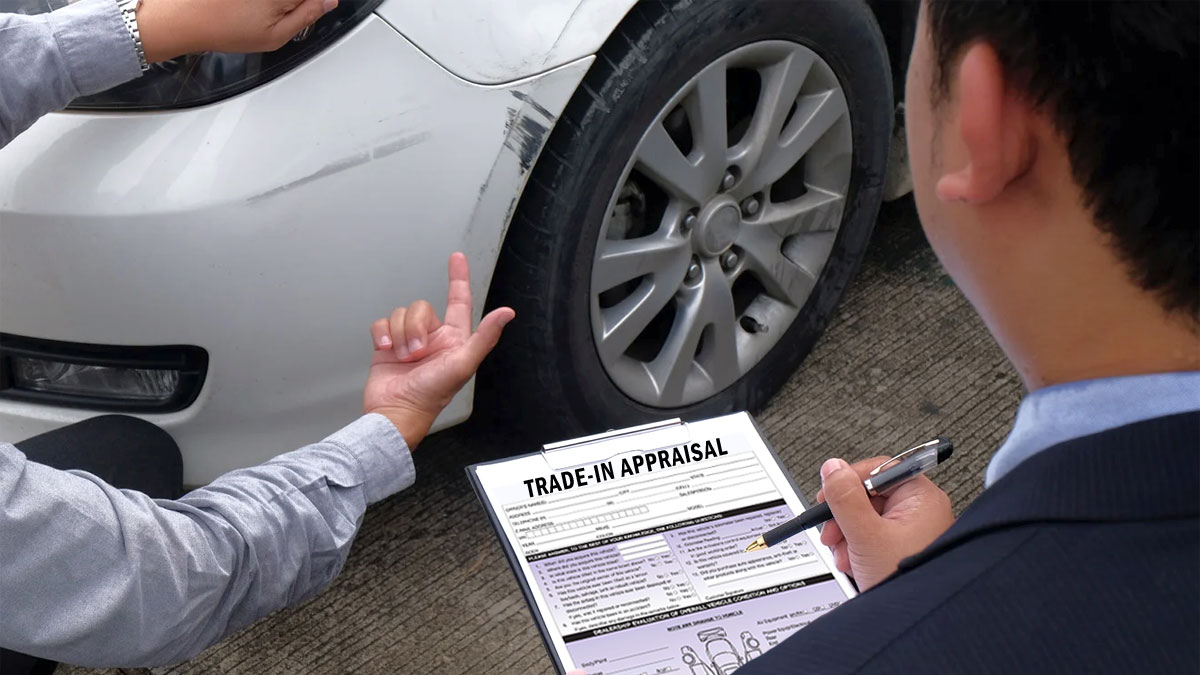You wince every time your eyes catch yet another new dent or scratch on your car. Years of minor fender benders, runaway shopping carts, and parking garage oopsies have left your vehicle with a few bumps and bruises. But hey, it still reliably gets you where you need to go.
As you gaze out your cracked windshield pondering that sporty new model, dreams of an upgrade start dancing in your head. But can you trade in a damaged car?
Good news… even damaged vehicles can retain decent trade-in value if you play your cards right. Keep reading to maximize your trade-in offer!
See Also – Is It Possible to Trade In 2 Cars for 1 New One?
Can You Trade In a Damaged Car?
Yes, you can trade in a damaged car. The process might be a bit different from a trade-in involving a car in good condition, but it’s certainly not off the table.
When considering a trade-in for a car with issues, whether they’re mechanical or from an unfortunate fender bender, transparency is key. Dealerships will take a car with problems, but they need to know the extent of the issues.
Walking into a dealership with honesty about your car’s condition can prevent any legal headaches down the line. You’ll get an offer that reflects the car’s current state—fair and square.
But if you’re setting your hopes high for a great payout, the reality is that a damaged car will naturally fetch a lower price compared to one without issues. Your car’s value takes a hit with each dent and ding, more so if there’s a significant mechanical failure.
Still, it’s a straightforward way to offload a problem vehicle while potentially knocking off some cost from your next ride.
Key Factors Influencing Trade-In Value of Damaged Vehicles
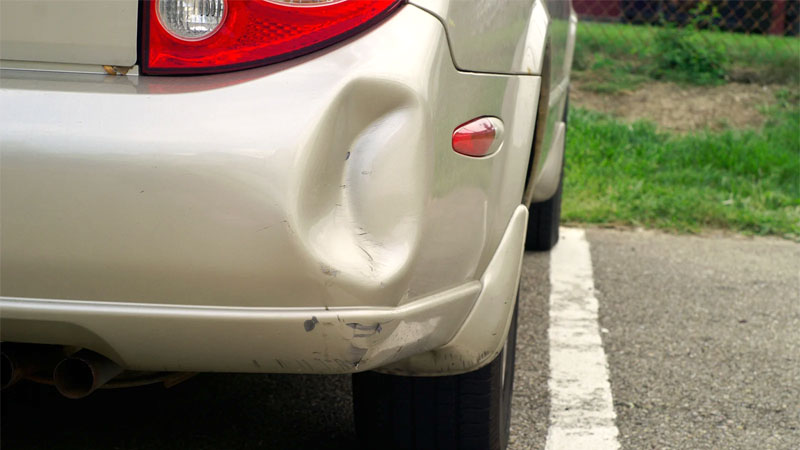
When you drive a vehicle with cosmetic damage or mechanical issues onto a dealer lot, several important factors influence the dollar value they attach to it as a trade-in.
It’s not as simple as just large or small scratches – the trade-in equation considers details that determine if your car can be resold easily and for how much.
Type and Severity of Damage
The dealer will closely evaluate what kinds of problems your car has. Light scratches that could be buffed out affect value less than major missing pieces of trim or body panels. Small dents differ from structural frame damage. Factors considered include:
- Cosmetic vs Mechanical – Scratches devalue less than transmission issues
- Minor vs Major – A few light scratches reduce value less than deep gashes
Repairs Done or Still Needed
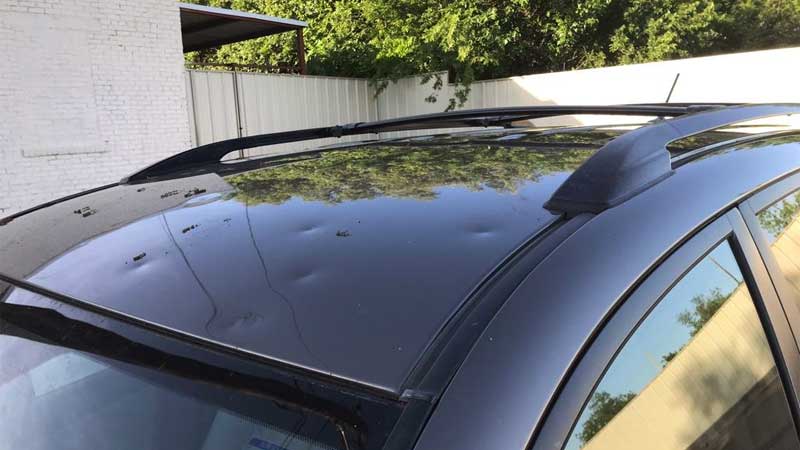
The amount of repairs and mechanical work still needed on a damaged vehicle greatly impacts the figure the dealer will offer for its trade-in value.
- Completed Repairs – A car that has had collision repairs, new paint, and other fixes done by a professional shop will be worth more as a trade-in than one still showing crash damage. The dealer saves repair costs.
- Unrepaired Damage – Extensive hail damage, missing trim pieces, leaking oil that has not been addressed will lower what the dealer thinks they can resell your car for, reducing trade-in value.
Vehicle’s Overall Condition
A car with damage builds up better trade-in value if other aspects of its history and condition are good. Factors that matter:
- Mileage and Wear & Tear – A car with average or low miles for its age indicates a well-maintained vehicle with years of reliable service left to offer new owners, boosting trade-in potential. High mileage raises concerns about needed repairs. Normal wear versus torn upholstery or stains also impacts value.
- Maintenance Records – Detailed repair invoices and oil change records show if critical preventive maintenance has been done. Bonus points if the particular dealership has been servicing the vehicle. This helps reassure dealer of sound mechanicals underneath damage, increasing what they can offer based on confidence of resale. Lacking records raises uncertainties that reduce value.
Demand for Specific Makes and Models
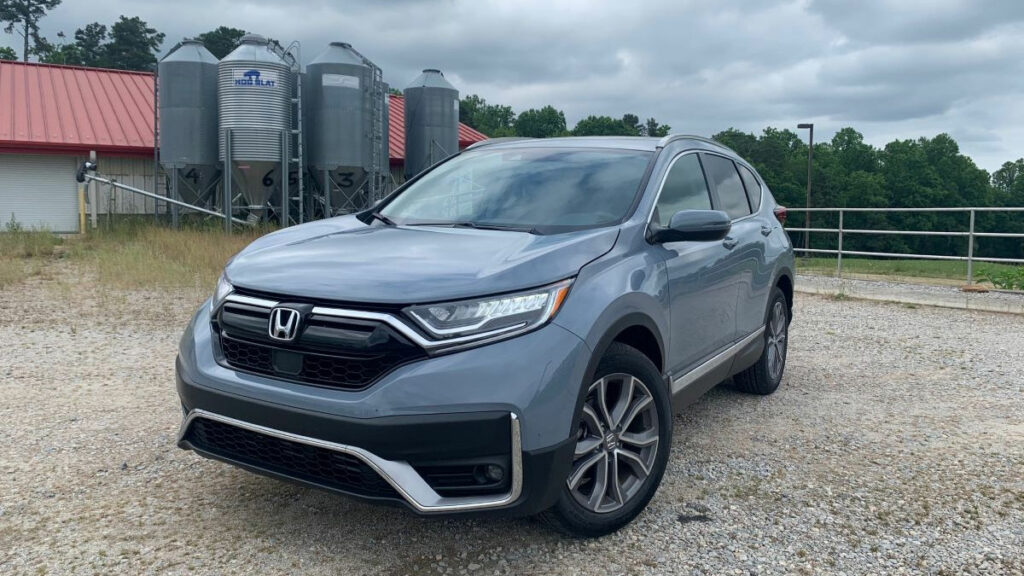
Not all damaged vehicles lose huge chunks of worth. Trade-in value damage impact depends partly on market trends influencing certain makes and models at a given time.
- Popular Segments – SUVs and trucks often retain stronger trade-in value even with mileage or scrapes versus less popular segments like sedans slowing in sales.
- Brands and Models Holding Value – The brand, features, and reliability reputation of a car model can make it continue appreciating. Time of year can swing values too. Doing research on your car’s make, model, year and segment offers clues to how much damage may reduce the trade figure.
As we’ve seen, used car prices and trade-in values can also be affected by outside factors such as COVID and the global chip shortage in the automotive industry
Now when that dealership lot assessor winces looking over your vehicle’s flaws, you can better gauge if their eventual trade offer fairly factors in damage deduct impacts based on your car’s overall positives and the current market.
Educating yourself on these influential factors before ever heading to the dealer gives you important negotiation power. Only by understanding what makes your car valuable underneath the dings can you push for the best possible trade offer.
Options for Trading in a Damaged Car
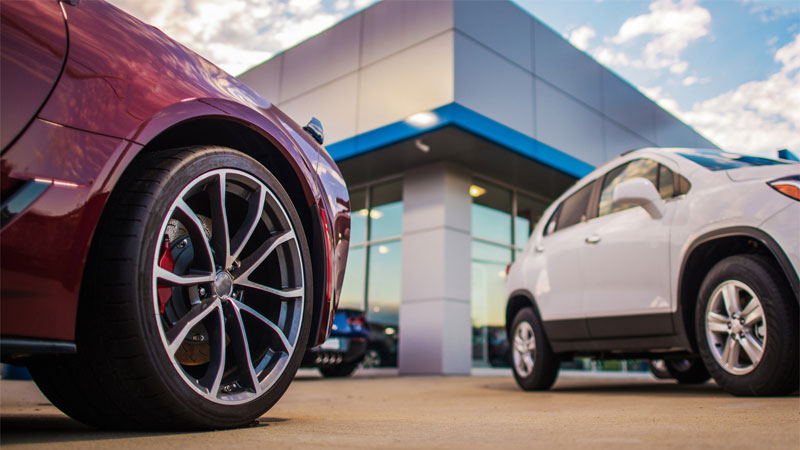
While seeking the best value, there are several routes you can take for trading in a damaged vehicle. These options include:
Dealerships
Auto dealership trade-ins remain the most convenient option for many consumers. Dealers will appraise then make an offer representing estimated wholesale auction or salvage values after repair costs. Expect some advantages and pitfalls.
- Dealers May Accept Damaged Trade-Ins – Unlike private sales, dealers possess some capacity to have collision fixes done in-house. But…
- Offers Tend to be on Lower End – Don’t expect dealer offers to reach top levels the vehicle could be resold for in perfect shape. Their eventual sale to others factors in more costs and profits for them. Be ready to negotiate!
Shopping multiple dealers can uncover the highest offer. Or using online appraisal services first may give you more value visibility, enabling negotiations informed by additional data points on your damaged vehicle’s current market worth ranges.
Online Appraisal Services
With digital photos and condition descriptions, a site like Kelley Blue Book Instant Cash Offer and others can provide quotes for your car’s trade-in value. What to know:
- Receive Value Quotes – Quick online forms allow listing damage flaws for consideration. Comprehensive condition and component evaluations provide transparency into determining factors behind final value quotes.
- Broker Sale Options Included – Some services give the option to just receive your quote, while others will broker actually purchasing and coordinating transfer of your vehicle to their salvage or wholesale auction partners after your online quote acceptance. Payout timeframes vary.
Online appraisal services can uncover wider market value metrics useful for negotiation positions when trading in at local dealers next. For those valuing speed and convenience highest, online broker services purchase damaged vehicles directly.
Salvage Yards & Junkyards
Owners willing to put in more legwork could directly engage salvage yards and junkyards active in purchasing used vehicles for parts harvesting or scrap material resale. A few things to expect:
- Pay Very Low Wholesale Prices – Don’t expect anything close to private market retail values. Offers typically calculate just the wholesale parts harvest value or scrap metal commodity prices per vehicle weight. These businesses need large profit margins to sustain operations.
- May Pay Cash Immediately – After quickly assessing specific damage and rust, many salvage buyers provide same-day payment by cash or other hard-to-trace methods. Those valuing fast payouts over maximizing dollars may find this appealing.
In the end, salvage yards and junkyards pay the lowest prices – but provide secured cash payment immediately while relieving you of further responsibilities for damaged machine removal. For real junkers, they may be your only option.
How to Maximize Trade-In Value
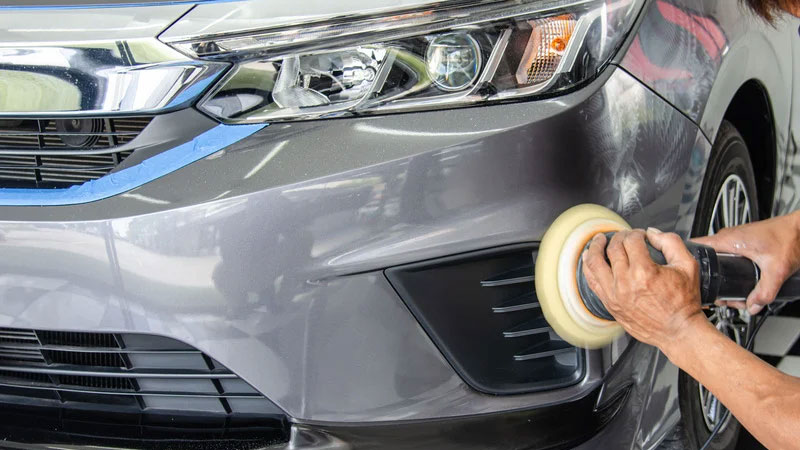
Determining ultimate payoff for your damaged vehicle not only depends on the specifics of its condition and the buyer’s processes, but also your negotiation efforts to earn the top figure.
1. Repair Minor Cosmetic Damage
If you have the time and budget, taking steps to fix small dents and scratches yourself or at an auto body shop could positively impact the trade figure offered. While extensive structural repairs may not make financial sense prior, cosmetic bumps and waxy residue often get addressed much more affordably.
Even spending money to have your vehicle professionally detailed may make sense in many cases, especially if the vehicle make/model is in demand.
2. Provide Service Records
To reinforce preventive maintenance has occurred alongside damage over the years, source your most comprehensive maintenance logs and repair invoices you can locate. The stronger picture of component health and diligent ownership you convey through documentation, the less an assessor will mentally default to worst-case concerns.
3. Get Professional Vehicle Appraisals
Seek out respected general or make/model-specific auto appraisal services online providing blue book trade-in quotes and retail/auction market pricing reports. Even if reports print at under $100 each, the tangible documentation assists negotiation positions later with dealers hesitant to budge higher on initial offers.
4. Shop Values at Multiple Dealers
No two dealerships calculate trade offers identically. By bringing your car to several area dealer chains for appraisal, you gain better perspective on real average offers in your local market. Reference ranges also improve negotiations with any individual lowball bids.
Just because you drive a Toyota doesn’t mean the Toyota dealership will offer more than the Ford dealership a couple blocks away.
5. Negotiate Firmly But Fairly
Combining researched value quote data, invested repair receipts, and multiple dealer offer points allows you to negotiate fairly but forcefully for the upper edge of realistic market value for the vehicle’s condition.
Be open about known damage flaws still needing addressed but stand firm if figures undershoot averages. Dealers expect some negotiating, so make it work toward your best interests.
- History of the Chevrolet SSR: The Retro-Styled Convertible Pickup - Apr 25, 2024
- The History of the BMW M Coupe (the “Clown Shoe”) - Mar 26, 2024
- The History of the Ford Flex - Feb 28, 2024

